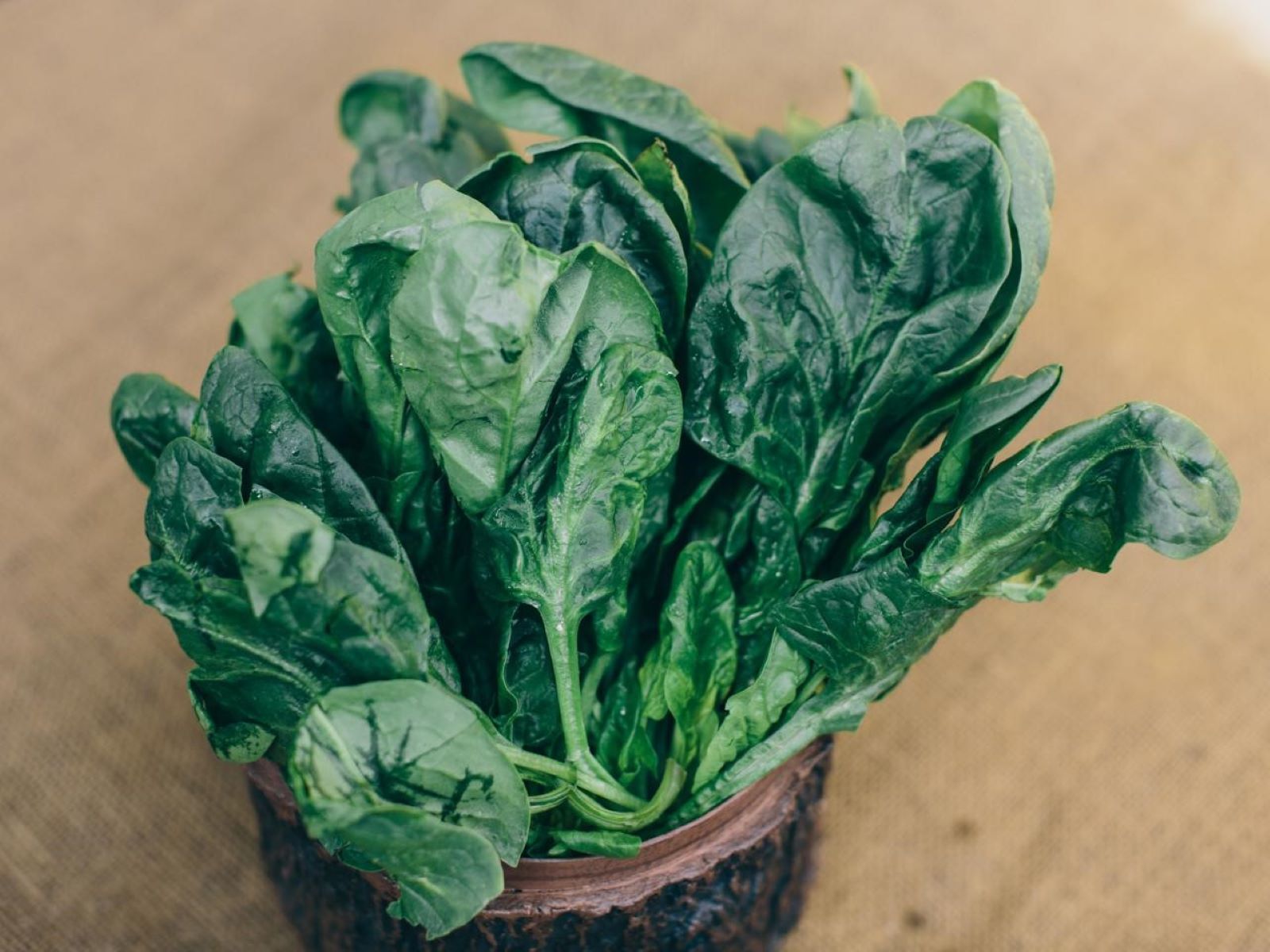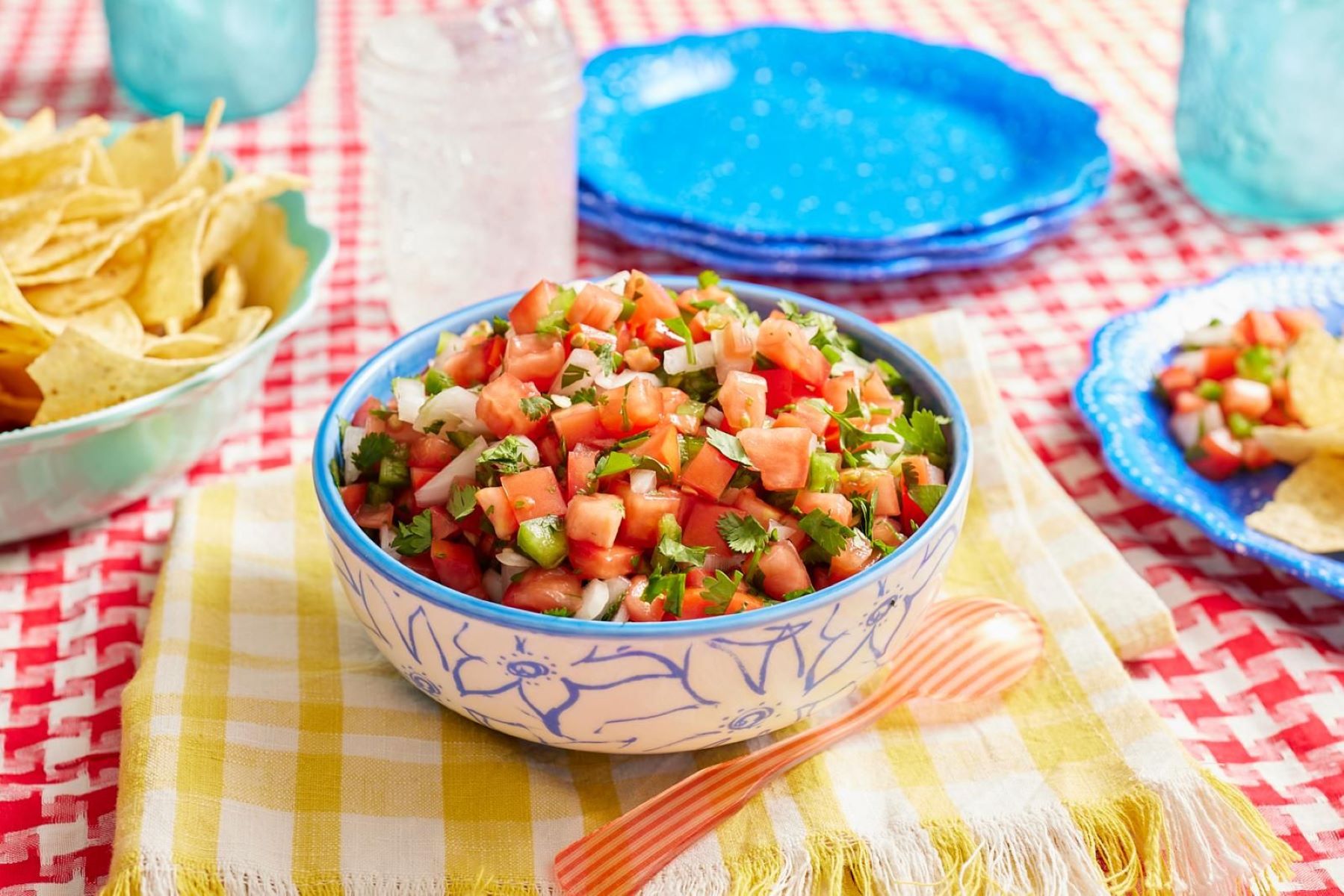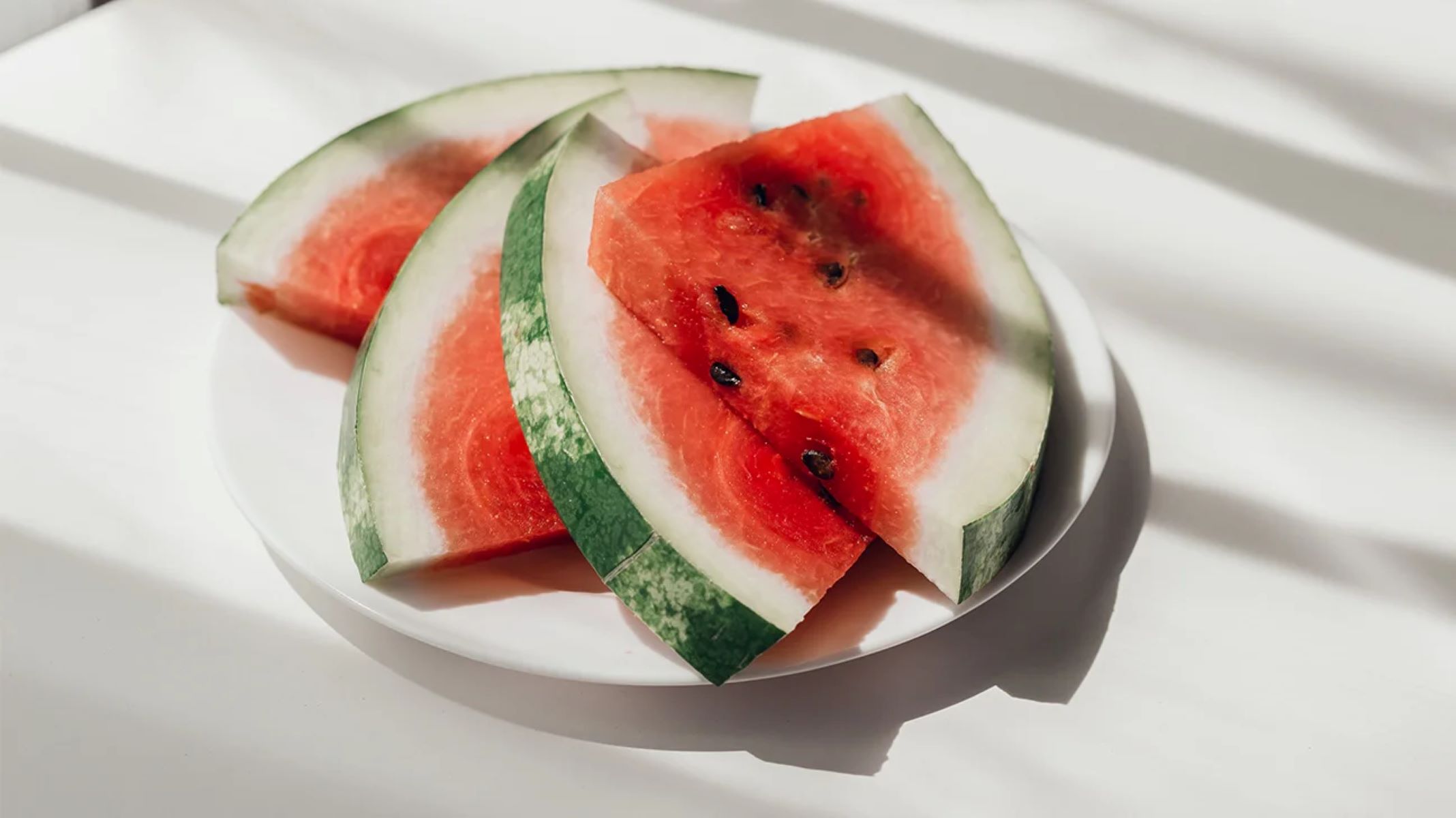Home>Food and Cooking>How To Freeze Spinach


Food and Cooking
How To Freeze Spinach
Published: March 5, 2024
Learn how to freeze spinach for long-term storage with our easy step-by-step guide. Keep your greens fresh and ready for cooking! Perfect for food and cooking enthusiasts.
(Many of the links in this article redirect to a specific reviewed product. Your purchase of these products through affiliate links helps to generate commission for Regretless.com, at no extra cost. Learn more)
Table of Contents
Introduction
Freezing spinach is an excellent way to preserve this nutrient-packed leafy green for future use. Whether you have an abundance of fresh spinach from your garden or want to take advantage of a sale at the grocery store, freezing spinach allows you to extend its shelf life and have it readily available for use in various recipes. By following a few simple steps, you can ensure that your frozen spinach retains its vibrant color, flavor, and nutritional value.
Spinach is a versatile and nutritious ingredient that can be used in a wide range of dishes, including smoothies, soups, casseroles, and pasta sauces. It is rich in essential nutrients such as iron, calcium, vitamins A and C, and antioxidants, making it a valuable addition to a healthy diet. Freezing spinach at its peak freshness allows you to enjoy these nutritional benefits even when the fresh produce may not be readily available.
In this guide, we will walk you through the process of freezing spinach, from washing and preparing the leaves to blanching and finally storing them in the freezer. Additionally, we will provide tips on how to use frozen spinach effectively in your cooking endeavors. By learning how to freeze spinach properly, you can minimize waste, save money, and always have this nutritious green at your fingertips.
Now, let's dive into the step-by-step process of freezing spinach to ensure that you can enjoy its freshness and nutritional benefits for an extended period.
Read more: How To Freeze Okra
Step 1: Washing and Preparing the Spinach
Before freezing spinach, it's crucial to start with fresh, high-quality leaves. Begin by selecting spinach that is vibrant green, crisp, and free from any signs of wilting or yellowing. Once you have chosen your spinach, it's time to prepare it for freezing.
-
Inspect the Leaves: Spread the spinach leaves out on a clean surface and carefully inspect them. Remove any damaged or discolored leaves, as well as any debris or foreign particles that may be present.
-
Rinse Thoroughly: Place the spinach in a colander and rinse it under cold running water. Gently agitate the leaves with your hands to ensure that any dirt or residue is removed. Repeat this process as needed until the water runs clear, indicating that the spinach is clean.
-
Trim the Stems: While spinach stems are edible, they can become tough when frozen. To ensure a pleasant texture after freezing, consider trimming the stems off the leaves. This step is optional, but it can enhance the overall quality of the frozen spinach.
-
Dry the Leaves: After washing and trimming, it's important to thoroughly dry the spinach. Excess moisture can lead to ice crystals forming on the leaves during freezing, which may affect the texture. Use a salad spinner or gently pat the leaves with paper towels to remove as much moisture as possible.
By taking the time to properly wash and prepare the spinach, you can ensure that it is clean, free from debris, and ready to undergo the blanching process, which is essential for preserving its color, flavor, and nutritional value during freezing.
Step 2: Blanching the Spinach
Blanching is a crucial step in the process of freezing spinach, as it helps preserve the color, texture, and nutritional quality of the leaves. This technique involves briefly immersing the spinach in boiling water, followed by rapid cooling in an ice water bath. Blanching serves several purposes, including deactivating enzymes that can cause the spinach to deteriorate over time, as well as reducing the microbial load to maintain food safety.
To blanch spinach effectively, follow these steps:
-
Boil Water: Fill a large pot with water and bring it to a rapid boil over high heat. It's essential to use an ample amount of water to ensure that the spinach can be fully submerged once added to the pot.
-
Prepare an Ice Water Bath: While the water is coming to a boil, fill a large bowl with cold water and add ice cubes to create an ice water bath. This will be used to rapidly cool the spinach after blanching, halting the cooking process and preserving the vibrant green color.
-
Blanch the Spinach: Once the water is boiling, carefully add the prepared spinach to the pot. It's best to work in small batches to prevent overcrowding. Submerge the spinach using a slotted spoon or tongs and allow it to blanch for approximately 2 minutes. The exact timing may vary depending on the quantity and thickness of the leaves.
-
Transfer to Ice Water Bath: After the blanching time is complete, quickly remove the spinach from the boiling water and transfer it to the ice water bath. This rapid cooling process is crucial for stopping the cooking and preserving the bright green color of the leaves.
-
Drain and Squeeze Out Excess Water: Once the spinach has cooled in the ice water bath for a few minutes, remove it and gently squeeze out any excess water. It's important to handle the spinach delicately to avoid crushing the leaves.
By blanching the spinach, you can deactivate enzymes that can cause deterioration, reduce the microbial load, and preserve the vibrant green color and nutritional value of the leaves. This step sets the stage for successful freezing and ensures that the spinach maintains its quality during storage.
Now that the spinach has been blanched, it's ready to undergo the final step of the freezing process, which involves portioning and storing the leaves for future use.
Step 3: Freezing the Spinach
With the spinach blanched and prepared, the final step involves freezing the leaves to preserve their freshness and nutritional value. Properly storing the blanched spinach ensures that it remains accessible for use in various recipes, allowing you to enjoy the benefits of this nutrient-packed green over an extended period.
To freeze the blanched spinach effectively, follow these steps:
-
Portion the Spinach: Begin by portioning the blanched spinach according to your anticipated usage. You can divide it into convenient serving sizes based on your typical recipes or portion it into smaller quantities for added flexibility. Consider using airtight containers, resealable freezer bags, or vacuum-sealed pouches for storage.
-
Remove Excess Air: If using freezer bags, gently press out excess air before sealing them to minimize the potential for freezer burn. Alternatively, if using containers, ensure that they are sealed tightly to prevent air exposure.
-
Label and Date: Properly label each container or bag with the contents and date of freezing. This step is essential for keeping track of the spinach's storage time and ensuring that you can use the oldest portions first, maintaining freshness.
-
Freeze Quickly: Place the portioned spinach in the freezer promptly after packaging to maintain its quality. It's advisable to arrange the containers or bags in a single layer initially to allow them to freeze quickly. Once frozen, they can be stacked or arranged more efficiently in the freezer.
By following these steps, you can ensure that the blanched spinach is properly stored and ready for future use in your culinary endeavors. Freezing the spinach at its peak freshness allows you to enjoy its vibrant color, flavor, and nutritional benefits even when fresh spinach may not be readily available.
Tips for Using Frozen Spinach
When it comes to using frozen spinach in your recipes, consider these tips for optimal results:
-
Thawing: To thaw frozen spinach, transfer the desired portion to the refrigerator and allow it to thaw overnight. Alternatively, you can use the defrost setting on a microwave for a quicker thawing process.
-
Squeezing Out Excess Moisture: After thawing, gently squeeze out any excess moisture from the spinach before incorporating it into your dishes. This step helps maintain the desired texture and prevents excess liquid in your recipes.
-
Versatile Ingredient: Frozen spinach can be used in a wide range of recipes, including soups, stews, casseroles, smoothies, and dips. Its versatility makes it a convenient and nutritious addition to various dishes.
By following these tips, you can make the most of your frozen spinach, incorporating it into your cooking with ease and enjoying its nutritional benefits in diverse culinary creations.
Now that you have learned the process of freezing spinach and how to use it effectively, you can confidently preserve this nutritious green and elevate your culinary repertoire with its vibrant flavors and healthful properties.
Read more: How To Freeze Squash
Tips for Using Frozen Spinach
When it comes to incorporating frozen spinach into your culinary creations, there are several tips and techniques that can enhance your cooking experience and ensure optimal results. Frozen spinach, when used thoughtfully, can elevate the flavor, texture, and nutritional profile of a wide range of dishes. Whether you're preparing hearty soups, creamy dips, or nutrient-packed smoothies, these tips will guide you in making the most of this convenient and versatile ingredient.
Thawing
To make the most of frozen spinach, it's essential to thaw it properly before use. The recommended method for thawing frozen spinach is to transfer the desired portion from the freezer to the refrigerator and allow it to thaw overnight. This gradual thawing process helps preserve the texture and flavor of the spinach. However, if you need to expedite the thawing process, you can use the defrost setting on a microwave for a quicker outcome. By thawing the spinach with care, you can ensure that it retains its essential qualities and is ready to enhance your recipes.
Squeezing Out Excess Moisture
Once the frozen spinach has thawed, it's important to gently squeeze out any excess moisture before incorporating it into your dishes. Frozen spinach tends to retain some water content, and excess moisture can affect the texture and consistency of your recipes. By gently pressing the thawed spinach in a sieve or using a clean kitchen towel, you can remove the excess liquid, ensuring that your dishes maintain the desired texture and flavor. This step is particularly important when adding spinach to recipes such as quiches, casseroles, and savory pastries.
Versatile Ingredient
Frozen spinach is a remarkably versatile ingredient that can be used in a wide array of recipes. From enriching savory stews and casseroles to adding a nutritional boost to creamy smoothies and dips, its adaptability makes it a valuable addition to any kitchen. Consider incorporating frozen spinach into your favorite pasta sauces, omelets, or even baked goods for an added dose of nutrients and vibrant color. Its convenience and long shelf life make it an excellent staple for quick and nutritious meal preparations.
By following these tips for using frozen spinach, you can unlock the full potential of this nutrient-packed green and infuse your dishes with its vibrant flavors and healthful properties. Whether you're a seasoned home cook or just beginning to explore the culinary world, frozen spinach offers a convenient way to elevate your recipes and nourish your body with essential nutrients. Embrace the versatility of frozen spinach and let it inspire your culinary creativity, knowing that you can enjoy its benefits in a wide range of delightful dishes.
Conclusion
In conclusion, mastering the art of freezing spinach opens up a world of culinary possibilities while ensuring that this nutrient-rich green remains a staple in your kitchen arsenal. By following the step-by-step process of washing, blanching, and freezing spinach, you can preserve its vibrant color, flavor, and essential nutrients for future use. The convenience of having frozen spinach readily available allows you to effortlessly incorporate its healthful properties into a diverse range of recipes, from comforting soups and stews to invigorating smoothies and dips.
By taking the time to carefully wash and prepare the spinach, you set the stage for successful freezing, ensuring that the leaves are clean, free from debris, and ready to undergo the blanching process. Blanching the spinach is a crucial step that deactivates enzymes, reduces microbial load, and preserves the vibrant green color and nutritional value of the leaves. This technique not only safeguards the quality of the spinach but also extends its shelf life, allowing you to enjoy its benefits long after the fresh produce may have disappeared from the market.
The final step of freezing the blanched spinach in portioned servings ensures that it remains accessible for use in various recipes. Properly storing the spinach in airtight containers or freezer bags, with excess air removed and labels indicating the freezing date, sets the foundation for maintaining its freshness and quality. Additionally, the tips for using frozen spinach provide valuable insights into thawing techniques, moisture removal, and its versatility as an ingredient, empowering you to make the most of this convenient and nutritious staple.
In essence, learning how to freeze spinach effectively empowers you to minimize waste, save money, and elevate your culinary creations with the nutritional benefits of this versatile green. Whether you're a seasoned home cook or an aspiring culinary enthusiast, frozen spinach serves as a reliable ally in your quest to create wholesome and flavorful dishes. Embrace the art of freezing spinach, and let its vibrant flavors and healthful properties inspire your culinary journey, knowing that you can savor its benefits in a wide range of delightful recipes.













